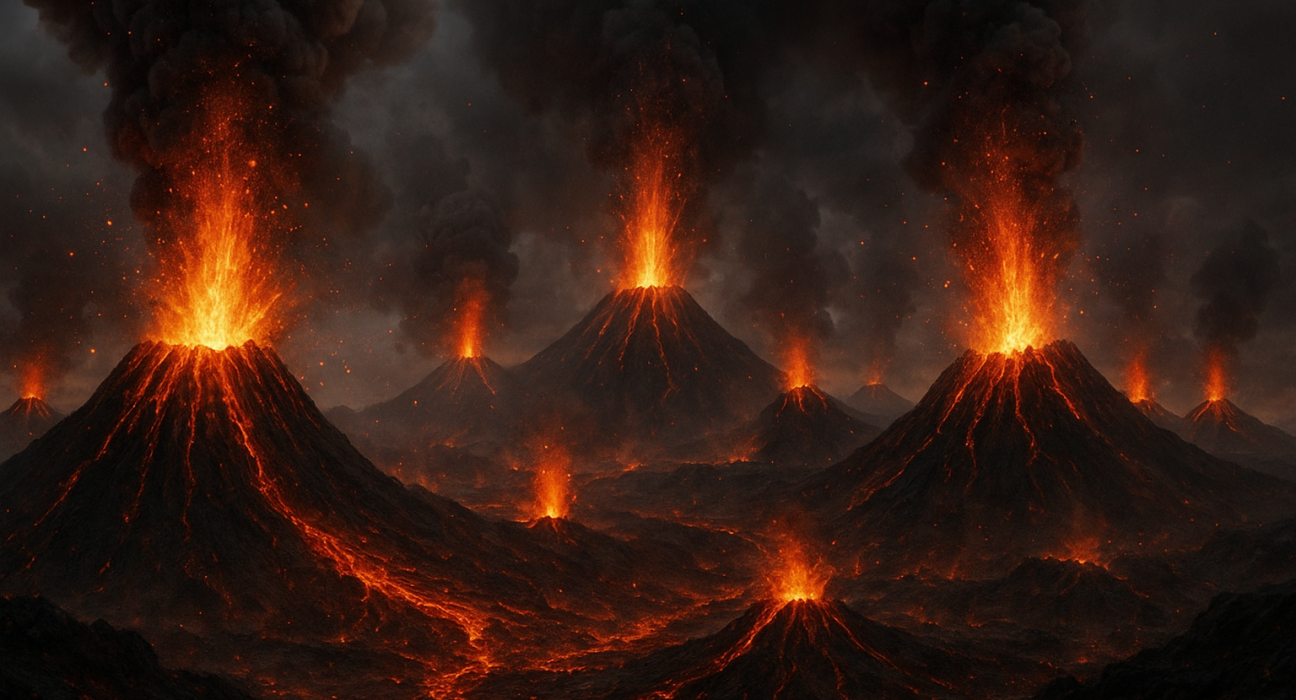In a stunning display of nature’s power, six volcanoes erupted in rapid succession across Russia’s Kamchatka Peninsula following a colossal 8.8 magnitude earthquake that struck the region on July 30, 2025. The quake, one of the strongest recorded in modern history, triggered what scientists are calling a “parade of volcanic eruptions” — a rare and dramatic geological phenomenon not seen in nearly 300 years2.
The Kamchatka Peninsula, located in Russia’s far east, lies within the Pacific Ring of Fire, a seismically active zone known for frequent earthquakes and volcanic activity. The earthquake’s epicenter was offshore, but its effects rippled through the region, causing the ground to shift southeastward by nearly two meters in some areas. This tectonic jolt appears to have awakened dormant volcanic systems, unleashing a chain reaction of eruptions.
Among the erupting volcanoes are:
- Klyuchevskoy: Eurasia’s tallest active volcano, which began spewing ash and lava shortly after the quake. Ash plumes reached over 32,000 feet, posing a hazard to aviation.
- Krasheninnikov: Dormant for over 500 years, this volcano erupted with a dramatic ash column rising six kilometers into the sky.
- Shiveluch, Bezymianny, Karymsky, and Avachinsky: These volcanoes, some dormant for centuries, have also roared to life, releasing ash, smoke, and lava across the rugged landscape2.
Experts from Russia’s Academy of Sciences and international seismologists have been closely monitoring the situation. Alexey Ozerov, director of the Institute of Volcanology and Seismology, described the event as “extremely rare” and attributed the eruptions to the earthquake’s activation of magmatic systems beneath the surface. The quake likely provided the necessary energy to destabilize magma chambers, leading to simultaneous eruptions.
Despite the dramatic visuals — including lava flows cascading down slopes and ash clouds billowing into the atmosphere — the immediate threat to human life remains low. The Kamchatka Peninsula is sparsely populated, and no major settlements lie in the direct path of the volcanic activity. However, scientists have issued warnings for aircraft to avoid the region due to the risk of ash cloud interference.
The eruption of Krasheninnikov, in particular, has drawn global attention. Not active since 1463, its sudden awakening underscores the unpredictable nature of seismic and volcanic interactions. Thermal anomalies and increased surface temperatures have been detected, suggesting ongoing subterranean activity.
This extraordinary geological episode serves as a stark reminder of the dynamic forces shaping our planet. While the Kamchatka Peninsula is no stranger to volcanic activity, the near-simultaneous eruption of six volcanoes — with a seventh showing signs of unrest — marks a historic moment in Earth science. Researchers continue to study the aftermath, hoping to better understand the link between massive earthquakes and volcanic chain reactions.
For now, the world watches as Kamchatka’s fiery giants light up the sky, a breathtaking — and humbling — spectacle of nature’s raw power.








Leave feedback about this
You must be logged in to post a comment.